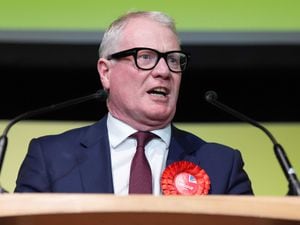Schools funding shake-up ‘will create significant winners and losers’
The IFS said the Government’s proposed plan was “broadly sensible” but warned some schools could face “protracted cuts”.

Justine Greening faced fresh pressure over a controversial shake-up of school funding as a respected economic think tank warned it would create “significant winners and losers” and would be “difficult” to implement with budgets already under pressure.
The Institute for Fiscal Studies (IFS) said that transitional protections during the move to a national funding formula (NFF) would need to extend beyond 2020 because the current plan implied that around 1,000 schools in England could face further cuts in per-pupil funding of 7% in the next parliament.
The IFS said the Government’s proposed plan was “broadly sensible” but warned some schools could face “protracted cuts” as a result of the shift from 152 different local authority formulae to a single national method of allocating funding.
Education Secretary Ms Greening and Prime Minister Theresa May have already been warned by Tory backbenchers in areas set to lose out that the plans will not make it through the Commons.
Meanwhile, unions have added to the pressure, claiming that the NFF will not be effective unless the Treasury agrees to provide more cash overall for schools.
The IFS analysis said the proposals were the most ambitious reform to the school funding system for over 25 years and, once implemented, would ensure similar schools in different parts of the country receive a similar level of funding per pupil.
But it warned that “implementing this reform at a time when there is already considerable pressure on school budgets will inevitably be difficult”.
The analysis also found that the formula “diverts funding away from schools with the most deprived student population and towards those with average levels of deprivation”.
As part of the plan, the Government has promised protections up until 2019-20 to ensure no school can lose more than 3% funding per-pupil in cash terms and no school can gain more than 5.6%.
But after 2020 around 1,000 schools will still be more than 7% above the funding level dictated by the formula – suggesting they will face further cuts.
Chris Belfield, one of the authors of the IFS report, said: “Somewhat inevitably, this reform creates winners and losers, and it comes at a time of severe pressure on school budgets as we are currently in the tightest four-year period for per-pupil spending in English schools since at least the early 1980s.
“The Government has put in place transitional protections to help smooth the transition process up to 2019-20. However, there is significant uncertainty about what will happen after 2019-20.
“This is a big omission considering only 60% of schools will be on the main formula in 2019-20. The formula could imply around 1,000 schools would face a further 7% cut to their budgets in the next parliament.”
The leaders of the ATL, NAHT and NUT education unions wrote to Mrs May accepting the need for a new formula but stressing it would not work while budgets were being squeezed.
Shadow education secretary Angela Rayner said the report showed that the proposed formula “isn’t fair and it isn’t funded”.
Ms Greening was offered support from one education chief, who urged her to “stay brave” as she welcomed the shake-up.
National Governors’ Association chief executive Emma Knights told the BBC: “Everybody pretty much agrees that the principle of the formula is right.”
She added: “People do understand that the current system can’t be defended and we do need a way of making sure we are distributing money across the country fairly.”





